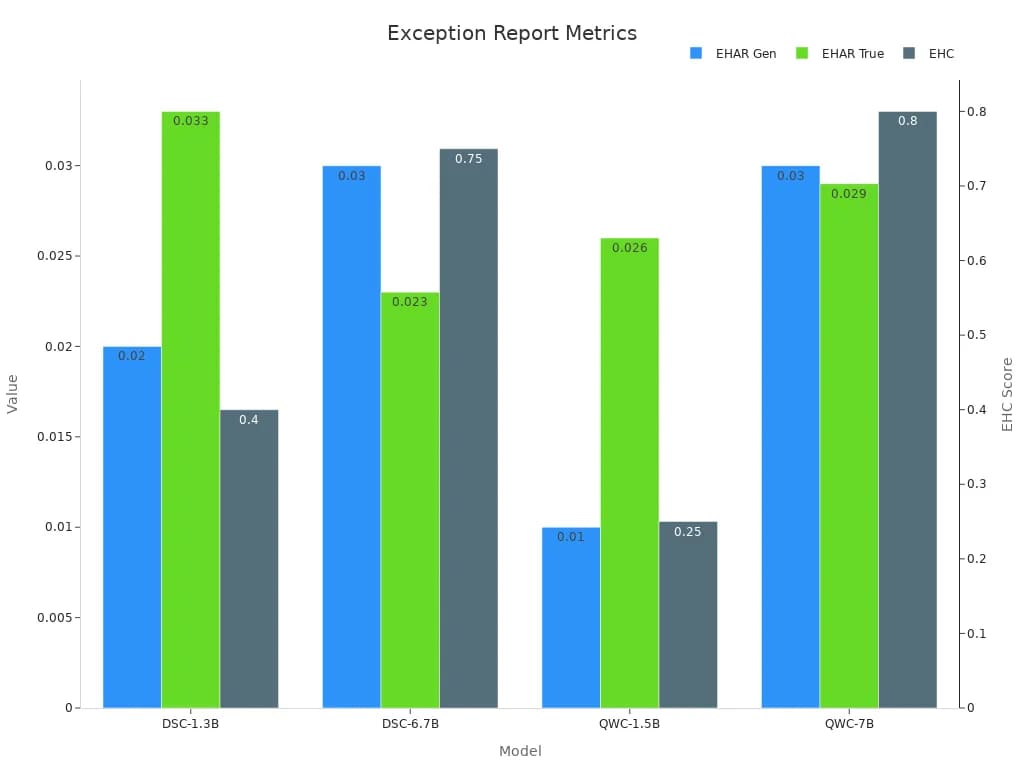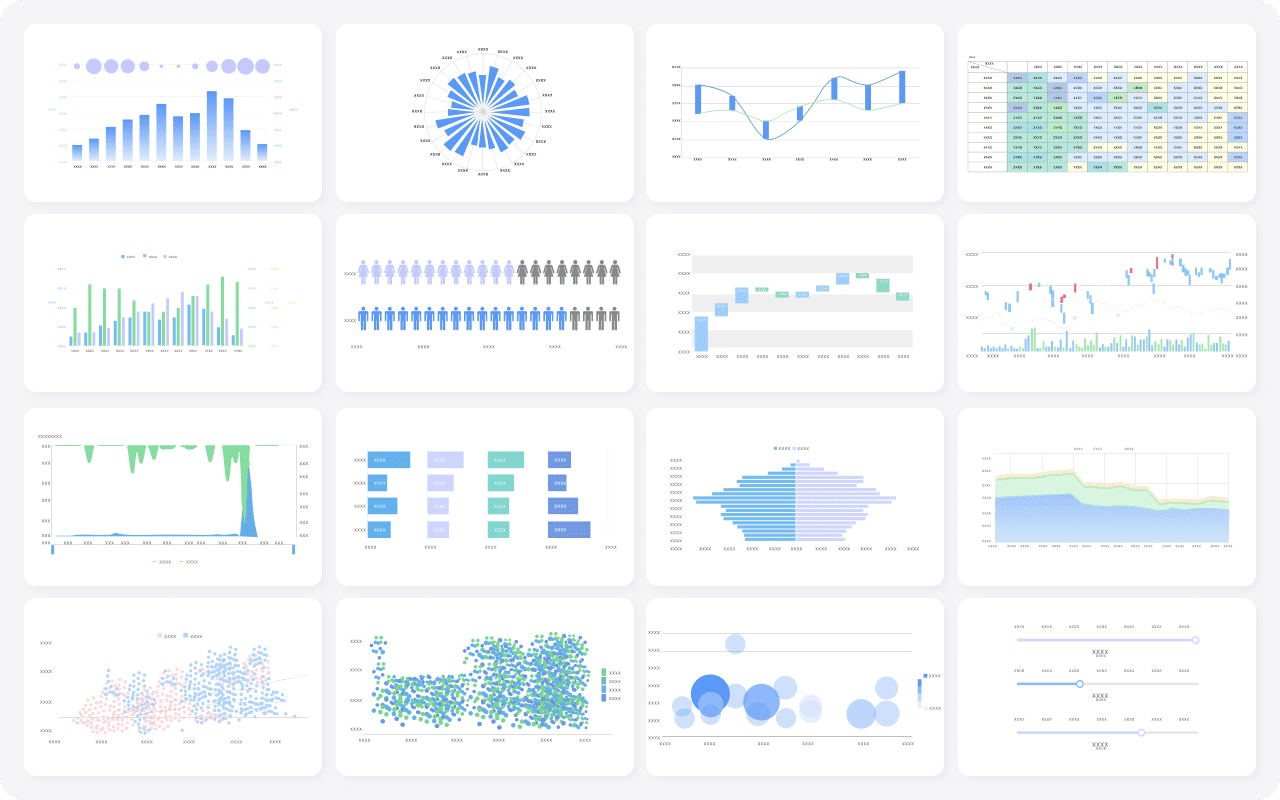An exception report highlights data or events that deviate from expected standards or targets. You use an exception report to spot issues, such as sudden drops in performance or unusual transactions, before they become bigger problems. Business professionals and managers in Malaysia rely on these reports because they help you focus on what truly needs attention and action.
- Exception reports identify trends and outliers in large datasets.
- Automated tools and real-time alerts make it easier for you to manage exceptions quickly.
- These reports support continuous improvement and risk management.
Key Takeaways
- Exception reports highlight unusual data or events that need quick attention to prevent bigger problems.
- These reports help businesses in Malaysia spot issues early, improve decision-making, and save time by focusing only on important exceptions.
- Using clear criteria and real-time alerts makes exception reporting more effective and helps teams in Malaysia respond faster.
- Exception reports support better resource use, accountability, and risk management across all departments.
- Regularly reviewing and learning from exception reports leads to continuous improvement and stronger business performance.
Exception Report Definition
What Is an Exception Report?
You use an exception report to highlight data or events that fall outside of what you expect in your business processes in Malaysia. The exception report definition centers on identifying and documenting any deviation from set standards, targets, or thresholds. For example, if your sales numbers drop below a certain level or a system goes offline unexpectedly, an exception report brings this to your attention right away.
You do not need to sift through all your data to find problems. Instead, the exception report focuses only on the outliers and anomalies that matter most. This targeted approach helps you act quickly and efficiently. Research shows that exception reporting systems can detect over 97% of relevant exceptions without overwhelming you with false alarms. This means you get the information you need without unnecessary noise, allowing you to focus on what truly requires your attention.
Tip: Think of an exception report as your business’s early warning system. It flags issues before they grow into bigger problems, saving you time and resources.
Exception Report Explanation
The exception report explanation goes beyond just spotting problems. It helps you understand what happened, where it happened, and why it matters. You can use exception reports to monitor everything from financial transactions to customer service metrics. For instance, in customer service, a sudden drop in satisfaction scores or a spike in complaints would trigger an exception report. In finance, the report might highlight unapproved spending or outstanding invoices.
You set specific thresholds and parameters to define what counts as an exception. These might include:
- Abnormal patterns or outliers in your data
- Deviations from normal behavior, such as a system uptime dropping below 99.9%
- Compliance violations or unauthorized access attempts
Here is a table showing common metrics and the thresholds that often trigger an exception report in different industries:
| Industry Sector | Metric Name | Typical Threshold Triggering Exception Report |
|---|---|---|
| Customer Service | CSAT (Customer Satisfaction) | Significant drop indicating customer dissatisfaction |
| Financial | EBITDA | Decline below set financial targets |
| IT / Software | System Uptime | Drop below 99.9% |
| Marketing | Conversion Rate | Falling below 5% |
| Logistics / E-commerce | On-time Delivery Rate | Sudden drop triggering supply chain investigation |
You benefit from exception reports because they help you:
- Identify and resolve issues before they escalate
- Improve data quality and accuracy
- Document anomalies clearly for accountability and learning
- Optimize workflows by highlighting bottlenecks
The exception report explanation also includes how you can use automated detection and real-time monitoring to catch exceptions as soon as they occur. This proactive approach supports better decision-making and helps you maintain control over your business operations in Malaysia.
Why Exception Reporting Matters
Business Impact in Malaysia
You face many challenges in your daily work. Unexpected changes can disrupt your plans and slow down your progress. Exception reporting helps you spot these changes early. When you use exception reports, you can see where things go off track. For example, you might notice a sudden drop in sales or a spike in customer complaints. These are signs that something needs your attention.
Exception reporting gives you a clear view of your business health in Malaysia. You can track key metrics and see how small problems can grow into bigger ones. If you manage a team in Malaysia, you want to know about project issues before they affect your goals. Exception reports highlight these issues, so you can act quickly. You avoid surprises and reduce the risk of missing deadlines.
Note: Exception reporting does not just show you numbers. It tells you where to look and what to fix. You save time because you do not have to search through all your data.
The impact of exception reporting reaches every part of your organization. You can use it to monitor financial performance, customer satisfaction, and even equipment status. When you catch deviations early, you protect your business in Malaysia from costly mistakes. You also build trust with your team and your customers in Malaysia.
Here is a quick list of how exception reporting creates business impact:
- Detects project issues before they escalate
- Improves response time to problems
- Reduces financial losses from unnoticed errors
- Supports compliance by flagging rule violations
Benefits for Organizations
You want your organization to run smoothly. Exception reporting helps you reach that goal. When you use exception reports, you gain several important benefits.
- Faster Decision-Making
You get real-time alerts when something unusual happens. This means you can make decisions quickly and with confidence. - Better Resource Allocation
You see exactly where problems exist. You can direct your resources to the areas that need them most. This prevents waste and boosts efficiency. - Improved Accountability
Exception reports document every deviation from your standards. You can track who took action and when. This creates a culture of responsibility. - Enhanced Risk Management
You lower your risk by catching issues early. Exception reporting helps you avoid costly project issues and keeps your business in Malaysia on track. - Continuous Improvement
You learn from every exception. Over time, you can adjust your processes and reduce the number of future problems.
| Benefit | How It Helps You |
|---|---|
| Faster Decisions | Respond to issues in real time |
| Resource Efficiency | Focus efforts where they matter most |
| Accountability | Track actions and outcomes |
| Risk Reduction | Prevent major losses from small errors |
| Process Improvement | Learn and adapt for better results |
You can see the impact of exception reporting in every department. Sales teams in Malaysia use it to track missed targets. Operations teams in Malaysia use it to monitor equipment failures. Finance teams rely on it to spot unauthorized transactions. When you use exception reports, you make your organization stronger and more agile.
Tip: Start small. Set clear criteria for exceptions. Review your reports regularly. You will soon notice fewer surprises and more control over your business in Malaysia.
Key Elements of an Exception Report
Essential Information
When you create an exception report, you need to include certain details to make it effective. The most important information helps you understand what went wrong and how to fix it. You should always start with a clear description of the issue. For example, if you find data entry errors or out of range values in your system, you need to document exactly what happened.

You also need to record where the problem occurred. This could be a specific department, project phase, or even a single file. Adding identifying details, such as document IDs or file names, makes it easier to trace the source of errors. You should include comments from the person who found the issue. These comments often explain why something is considered an exception and can help you prevent similar problems in the future.
A good exception report also lists the impact of the issue. You want to know if the problem affects your customers, your finances, or your workflow. Assigning responsibility is another key step. When you know who is in charge of resolving the issue, you can act faster and avoid confusion.
Tip: Documenting every exception builds a database of past mistakes. This helps you spot patterns and improve your processes over time.
Here is a table showing the essential elements you should include:
| Element | Why It Matters |
|---|---|
| Issue Description | Clarifies what went wrong |
| Location/Source | Pinpoints where the issue occurred |
| Impact Assessment | Shows how the issue affects your business in Malaysia |
| Responsibility | Assigns who will resolve the issue |
| Root Cause Analysis | Helps prevent future errors |
| Technician Comments | Adds context and insight |
| File Metadata | Ensures traceability and legal defensibility |
Structure and Format
The way you organize your exception report makes a big difference. A clear structure helps you and your team in Malaysia find information quickly. You should use sections for each key element, such as the issue description, impact, and resolution plan. Numbered lists or bullet points can make your report easier to read.
Design studies show that effective exception reports often include a comparison between what was expected and what actually happened. For example, you might compare actual sales numbers to your targets or check for data entry errors in inventory counts. You should also include a section for proposed solutions or mitigation steps.
A well-structured report supports accountability and process improvement. When you follow a consistent format, you make it easier to review past exceptions and learn from them. This approach also helps you identify flaws in your standard operating procedures and encourages feedback from frontline workers.
Below is a chart that highlights the importance of exception handling consistency in robust reporting:

You can see that higher consistency in handling exceptions leads to better alignment with best practices. This means your reports become more reliable and useful for decision-making.
Note: A strong exception report not only highlights errors but also guides you toward solutions and continuous improvement.
Exception Report Example in FineReport
Manufacturing Quality Control
You can use FineReport to create exception reports that transform how you manage quality in manufacturing. For example, you might track defective parts per million or monitor the scrap rate on your production line. When you set up dashboards in FineReport, you see real-time data on key metrics like yield, defect rates, and cost of quality. If you notice deviations from the project standards, such as a sudden increase in data entry errors or a drop in first pass yield, the system generates an exception report example that highlights these issues.
Statistical quality control methods, such as Sigma metrics, help you detect errors and process changes as they happen. You can design your quality control plan to trigger exception report examples when defect rates rise above your set threshold. First Article Inspection reports also play a role by validating that your process meets design requirements at the start of production. This early detection lets you take action before small problems become major recalls or costly rework.
| Quality Metric | Description | How Exception Reporting Helps |
|---|---|---|
| Defective Parts Per Million | Counts defective parts in a million produced | Triggers reports for corrective action |
| Scrap Rate | Measures wasted materials | Highlights waste for process improvement |
| Yield (First Pass Yield) | Tracks products made right the first time | Flags drops for immediate review |
| Cost of Quality | Compares prevention and failure costs | Guides resource allocation |
Tip: Use exception reports to spot trends and patterns. You can reduce errors and improve your process over time.
Real-Time Monitoring with FanRuan
FanRuan gives you powerful tools for real-time monitoring. You can visualize critical metrics with dynamic charts and graphs. The system analyzes your data and detects anomalies, so you receive alerts as soon as something unusual happens. For example, if your defect rate spikes or you see unexpected process deviations, you get notified right away.

You benefit from seamless integration with your existing systems. FanRuan dashboards support secure access controls, so only authorized users can view sensitive information. You can also use predictive analytics to spot risks before they impact your operations. This proactive approach helps you maintain compliance and keep your production running smoothly.
- Monitor key metrics in real time
- Receive alerts for errors or process changes
- Analyze trends and predict future risks
- Protect sensitive data with secure access
With these exception report examples, you gain better control over your manufacturing process. You can act quickly, reduce waste, and ensure your products meet the highest standards. To learn more about the FineReport features, you can click on the button below to go to the product guide.
Best Practices for Exception Reporting
Setting Criteria
You need clear criteria to make your business process in Malaysia exception report effective. Start by defining what counts as an exception in your workflow. Use specific thresholds, such as a drop in sales or a spike in system errors. Select alert types that fit your business context in Malaysia. Add contextual information to help your team in Malaysia understand each exception. Combine data from different sources to get a complete picture. Machine learning models can help you classify and prioritize alerts, making your exception reporting system more precise.
- Use user-friendly error messages that inform without blaming.
- Set up global handlers to keep error management consistent.
- Log exceptions in a structured way for easy diagnosis.
- Avoid silent failures by handling every exception.
- Regularly review and update your rules to match changing business needs in Malaysia.
Tip: High data quality and regular audits improve your system’s accuracy and reliability.
Actionable Insights
You want your exception reports to drive action, not just highlight problems. Real-time dashboards and integrated alerts help you respond quickly. For example, United Airlines used exception reporting to cut delays and maintenance issues by consolidating data from many systems. This approach led to faster decisions and better customer satisfaction. In warehouse management, exception reports help you spot inventory errors and shipping delays. You can solve problems before they grow.
Set clear, timely alerts that tell your team in Malaysia exactly what to do. Make sure your reports include enough detail for quick action. Train your staff to read and use these reports effectively. When you focus on actionable insights, you improve early issue detection and keep your operations running smoothly.
Continuous Improvement
Continuous improvement starts with regular review. Schedule audits of your exception reports, such as quarterly reviews. Look for patterns in the data and ask for feedback from your team in Malaysia. Use these insights to refine your processes. For example, some companies found better results by shifting budgets based on exception data. This led to higher returns and more efficient spending.
- Analyze exception data to find root causes.
- Collect feedback and update your policies.
- Use a formal process to capture and apply improvement ideas.
- Adjust your scheduling and workflows to reduce future exceptions.
Documenting issues and reviewing them often helps you build a stronger, more agile organization. When you use tools like FineReport and FanRuan, you can automate reviews and integrate exception reporting into your daily business processes in Malaysia.
Exception reports help you spot problems early and keep your business in Malaysia on track. When you use FineReport and FanRuan, you gain real-time insights and better control over your operations. These tools make it easier to act fast and improve your results.
Ready to take the next step? Explore exception reporting solutions today and see how they can help your business in Malaysia grow.
Click the banner below to try FineReport for free and empower your enterprise to transform data into productivity!
Continue Reading About Report
Empower Your Business: Best Financial Reporting Tools 2025
Free Daily Report Template – Streamline Reporting Fast
What Is a Daily Report and Why Does It Matter for Businesses
FAQ

The Author
Lewis
Senior Data Analyst at FanRuan
Related Articles

10 Best Reporting Tools To Boost Business Intelligence
See the top 10 reporting tools to boost business intelligence, automate reports, and drive smarter decisions with real-time data and analytics.
Lewis
Dec 02, 2025

What Is Accounting and Why It Matters in Business
What is accounting? It’s the process of tracking, analyzing, and reporting finances to help businesses make informed decisions and ensure compliance.
Lewis
Nov 18, 2025

How to Calculate Free Cash Flow Step by Step for Beginners
See how to calculate free cash flow step by step: find operating cash flow, subtract capital expenditures, and understand your true financial position.
Lewis
Nov 17, 2025




